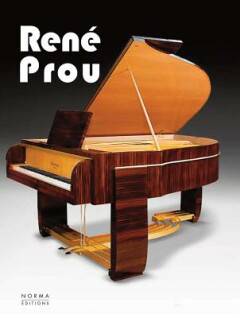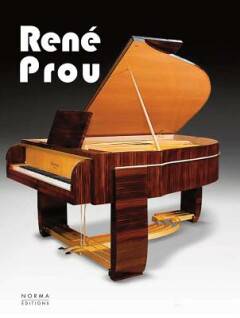
- Afhalen na 1 uur in een winkel met voorraad
- Gratis thuislevering in België vanaf € 30
- Ruim aanbod met 7 miljoen producten
- Afhalen na 1 uur in een winkel met voorraad
- Gratis thuislevering in België vanaf € 30
- Ruim aanbod met 7 miljoen producten
Zoeken
Omschrijving
René Prou (1889-1947), an ensemblier and decorator, was - alongside Ruhlmann, Leleu, Dunand, Subes and Brandt - a central figure of the Art Deco movement. Trained at Gouffé, in Paris, in the 1910s, Prou took part in most of the Salons d'Automne and the Salons des artistes décorateurs before commanding attention at the Exposition international des arts décoratifs of 1925. Firmly established by major public and private commissions, his talent as an ensemblier was expressed as much in the decoration of ocean liners - Cuba (1923), Lafayette (1928), Paris (1929) - as in the fitting out of the sleeper cars of the Orient Express; the Palace of Nations in Geneva, where he worked alongside José-Maria Sert, with whom he also collaborated at the Waldorf Astoria in New York; and the furnishing of the Mitsubishi department stores in Tokyo.
His style, defined by the curve of his metal leg blended with a joyous ornamentation, rejuvenated and lightened the full and massive forms of Art Deco while preserving harmony, comfort and a certain idea of simple luxury. Director of the École de l'Union centrale des arts décoratifs, in Paris, in 1946, his influence marked many postwar talents, including Jean Royère.
Text in English and French.
His style, defined by the curve of his metal leg blended with a joyous ornamentation, rejuvenated and lightened the full and massive forms of Art Deco while preserving harmony, comfort and a certain idea of simple luxury. Director of the École de l'Union centrale des arts décoratifs, in Paris, in 1946, his influence marked many postwar talents, including Jean Royère.
Text in English and French.
Specificaties
Betrokkenen
- Auteur(s):
- Uitgeverij:
Inhoud
- Aantal bladzijden:
- 240
- Taal:
- Engels
- Geïllustreerd:
- Ja
Eigenschappen
- Productcode (EAN):
- 9782376660040
- Verschijningsdatum:
- 30/04/2018
- Uitvoering:
- Hardcover
- Afmetingen:
- 250 mm x 305 mm

Alleen bij Standaard Boekhandel
+ 120 punten op je klantenkaart van Standaard Boekhandel
Beoordelingen
We publiceren alleen reviews die voldoen aan de voorwaarden voor reviews. Bekijk onze voorwaarden voor reviews.







